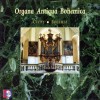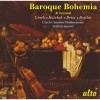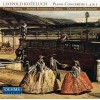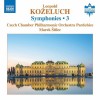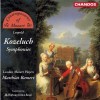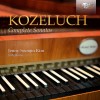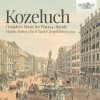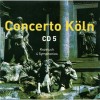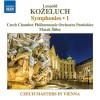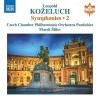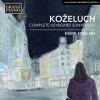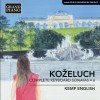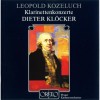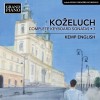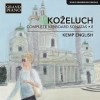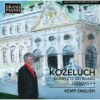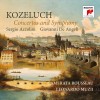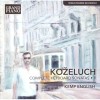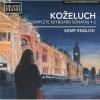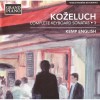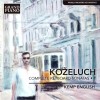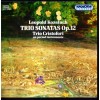Biography
Leopold Kozeluch (Czech pronunciation: [ˈlɛopolt ˈkoʒɛlux], born Jan Antonín Koželuh, alternatively also Leopold Koželuh, Leopold Kotzeluch) (26 June 1747 – 7 May 1818) was a Czech composer and teacher of classical music. He was born in the town of Velvary, in Bohemia (present-day Czech Republic).
Kozeluch was the son of the shoemaker Antonín Bartholomäus Koželuh. The composer Jan Antonín Koželuh was his cousin and for a while his teacher. Later, the pianist Katharina Kozeluch was his daughter. To avoid confusion with his cousin, he changed his name in 1774. His teachers in the 1770s also included František Xaver Dušek.
In 1771 he contributed his first work, a ballet, to the National Theater in Prague, and in the coming seasons wrote 25 works for them. In 1778 he went to Vienna, and was likely for a short while a student of Johann Georg Albrechtsberger.
Already after this short while, Kozeluch had also entered the ranks of acclaimed pianists. The imperial court gave him the position that had belonged to Georg Christoph Wagenseil as teacher to the Archduchess Elisabeth, the daughter of Maria Theresa of Austria. He was offered Wolfgang Mozart's position in Salzburg when Mozart left that office in 1781, but refused. He did however accept the position of court composer in Prague that Mozart's death left open in 1792.
Kozeluch also joined Freemasonry around the 1790s, in a lodge in Vienna. He experienced during his lifetime acceptance of his work in all of Europe; in his last years however the criticism that he was too prolific became heard more often. Criticisms of his work by Mozart and Beethoven are still remembered. Many works of his point in the direction of musical romanticism, while there is a deliberately reactionary thread running through other works as shown by his continuing use of the term "trio sonata" to describe his piano trios.
Kozeluch left around 400 compositions. Among these there are about thirty symphonies, twenty-two piano concertos, including a concerto for piano four-hands, arguably one of the best examples of this rare genre, two clarinet concertos, twenty-four violin sonatas, sixty-three piano trios, six string quartets, two oratorios (one of which, Moses in Ägypten, has recently been produced and recorded), nine cantatas and various liturgical works. Among his music there are also operas and works for ballet, which-- with the exception of one opera -- have yet to be heard in recent years. Numerous arrangements by him of Scottish songs for the Edinburgh collector George Thomson were popular, and some of these have also been recorded.







